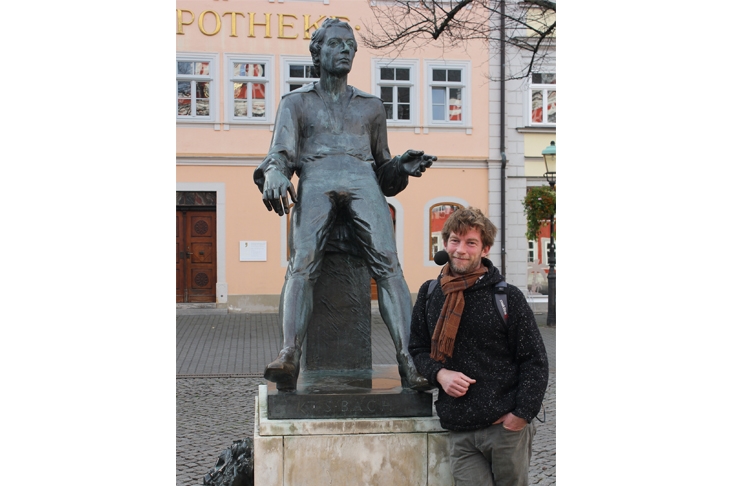It was in his organ loft at Arnstadt that I began my acquaintance with Johann Sebastian Bach — with JSB, with the young man, with the writer, the fighter, the lover. After the great walk of his in 1705 that we would follow, and after his return trek in February 1706, he would be caught at it in that organ loft with a ‘mysterious’ woman, who may or may not have been she who became his wife. It is the perfect place for a stolen moment. The church is now white and golden, and wooden, ugly on the outside and elegant as a cream bun on the in. To reach the loft you leave the producer talking to the stern and understandably suspicious woman in moral charge of the church — who are these English people?
Richard Andrews, studio manager, was recording seven tracks, or five but one of them was double. His hand-built rig is the state-of-the-art equipment for recording three-dimensional 360 degree wildtrack (ambient sound), my voice, as I walked 20 yards ahead of him, and his footsteps, every one of them, on the five expeditions we judged most likely to have followed Bach’s paths of 1705. In late October of that year the fighting, womanising young man who was and would become J.S. Bach walked the 280 miles or so from Arnstadt to Lübeck to see and hear Dietrich Buxtehude, the organist in charge of St Mary’s church, the Marienkirche, there.
Atop all the staircases is an angled-loft ladder barred by a low locked gate. Hop over this and you are soon in the nest, the ceiling low, the scent woody and the organ for all the world a steampunk supercomputer in its wooden housing. It has been replaced severally since Bach’s machine.








Comments
Join the debate for just £1 a month
Be part of the conversation with other Spectator readers by getting your first three months for £3.
UNLOCK ACCESS Just £1 a monthAlready a subscriber? Log in